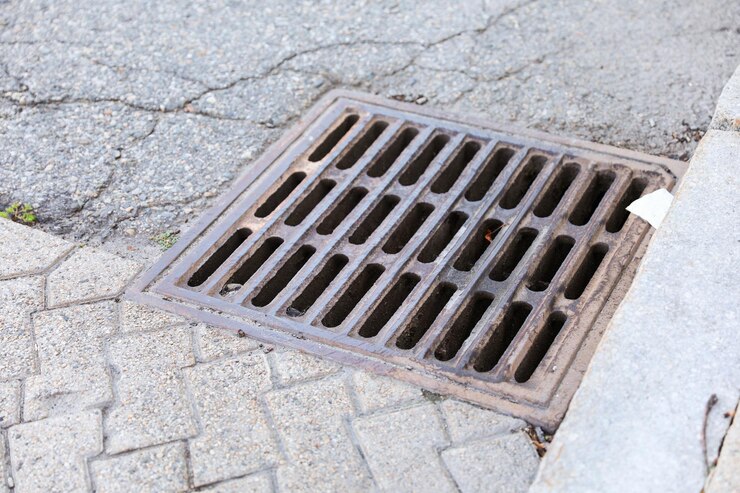Concrete drain grates are a crucial element of effective drainage systems, playing a vital role in managing stormwater and preventing flooding on properties. They are specifically designed to cover drainage channels, allowing water to flow into the drainage system while preventing debris and other materials from entering. Understanding the importance of these grates and how they contribute to property maintenance is essential for homeowners, builders, and property managers alike.
The Role of Concrete Drain Grates in Drainage Systems
At the core of any drainage system, concrete drain grates serve several essential functions. They are primarily designed to collect and direct surface water into underground drainage systems, helping to prevent water accumulation on properties. When rain falls, especially during heavy storms, water can quickly overwhelm the ground’s ability to absorb it, leading to pooling, flooding, and potential damage to landscapes and structures.
Concrete drain grates facilitate the smooth flow of water into drainage channels. Their sturdy construction ensures that they can withstand significant amounts of weight, making them suitable for various applications, from residential driveways to commercial parking lots. Additionally, the design of these grates allows for efficient water collection while minimizing the risk of blockages caused by leaves, dirt, and other debris.
Benefits of Using Concrete Drain Grates
- Durability and Longevity: One of the most significant advantages of concrete drain grates is their durability. Unlike plastic or metal alternatives, which may corrode or become brittle over time, concrete is a resilient material that can withstand harsh weather conditions, heavy traffic, and physical impacts. This durability means that once installed, concrete drain grates can last for many years with minimal maintenance, making them a cost-effective solution in the long run.
- Flood Prevention: In areas prone to heavy rainfall, flooding can cause extensive damage to properties. Concrete drain grates play a vital role in flood prevention by efficiently channeling excess water away from critical areas. By managing stormwater effectively, these grates help protect landscapes, driveways, basements, and foundations from water damage.
- Safety: Standing water poses safety hazards, including slips and falls, especially in commercial properties with high foot traffic. Concrete drain grates help mitigate these risks by ensuring that water is directed away from walkways and driveways. Additionally, the solid structure of concrete grates provides a stable surface for pedestrians and vehicles, reducing the likelihood of accidents.
- Aesthetic Appeal: Concrete drain grates can enhance the aesthetic appeal of a property. They are available in various designs and colors, allowing property owners to choose options that blend seamlessly with their landscaping and architecture. Unlike metal grates, which may rust or deteriorate over time, concrete options maintain their appearance, adding to the overall beauty of the property.
- Ease of Maintenance: While regular maintenance is necessary for any drainage system, concrete drain grates require relatively low maintenance compared to other types. Regular inspections can help identify blockages, but the solid nature of concrete makes it less prone to wear and tear. Cleaning typically involves removing debris from the grate surface, which is a straightforward process.
Installation Considerations
When considering the installation of concrete drain grates, several factors should be taken into account to ensure optimal performance:
- Site Assessment: Before installation, a thorough site assessment is crucial. This evaluation helps identify the most effective locations for drain grates based on the property’s layout and drainage needs. Factors such as existing slopes, vegetation, and soil conditions will influence the design and placement of the drainage system.
- Sizing and Design: The size and design of concrete drain grates should be carefully selected based on anticipated water flow and volume. Larger grates may be necessary for areas that experience heavy rainfall, while smaller options may suffice for drier climates. Additionally, the design of the grate should complement the overall aesthetics of the property.
- Professional Installation: While some property owners may consider DIY installation, it is often best to engage professionals for this task. Experts can ensure that the grates are installed correctly and at the proper slope to facilitate water flow. They can also assess any potential issues that may arise during the installation process, helping to avoid costly mistakes.
- Regulatory Compliance: Depending on the location, specific regulations and guidelines may govern the installation of drainage systems. It is essential to be aware of local codes to ensure compliance and avoid potential fines or legal issues.
Conclusion
Concrete drain grates are an essential component of effective drainage systems, providing durability, safety, and aesthetic appeal while preventing flooding and water damage. Their robust construction ensures longevity, making them a worthwhile investment for property owners seeking to protect their investments. By facilitating the efficient management of stormwater, these grates contribute to the overall functionality and safety of residential and commercial properties.
Investing in high-quality concrete drain grates, coupled with professional installation and regular maintenance, can significantly enhance property value and ensure a safe environment for residents and visitors alike. As climate patterns continue to shift, leading to more frequent and intense rainfall events, the importance of efficient drainage systems, underscored by the functionality of concrete drain grates, will only continue to grow. Property owners who prioritize these systems will be better equipped to manage stormwater, mitigate flooding risks, and maintain the integrity of their properties for years to come.





Comments